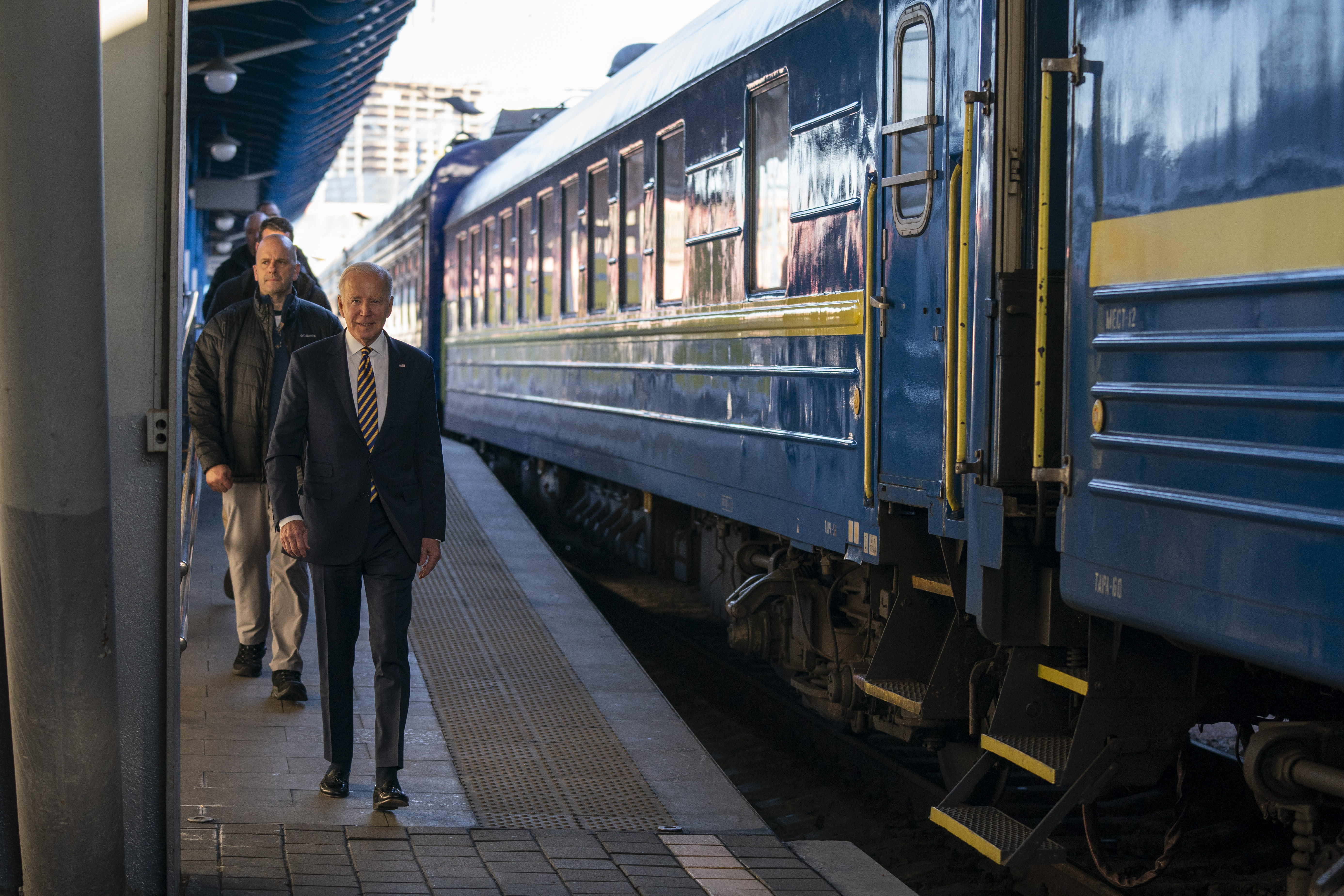
President Joe Biden’s surprise visit Monday morning to wartime Kyiv began in the dead of night at a military airport hangar outside Washington, DC.
At 4:00 am (09:00 GMT) Sunday, unbeknown to the world’s media, the Washington political establishment or American voters, the 80-year-old Democrat boarded an Air Force Boeing 757, known as a C-32.
The plane, a smaller version of the one US presidents normally use on international trips, was parked well away from where Biden would usually board. And a telling detail: The shade on every window had been pulled down.
The White House had discussed the possibility of a Biden trip to Kyiv for a year, and the president made the final decision to go on Friday. The trip was the first for a US president into an active warzone where US forces were not involved in the fighting and the US did not control the airspace.
Fifteen minutes after arriving at Joint Base Andrews early Sunday morning, Biden, a handful of security personnel, a small medical team, close advisers, and two journalists who had been sworn to secrecy, took off en route to a warzone.
The US president is perhaps the most constantly scrutinised person on the planet.
Members of the press follow Biden wherever he goes, whether to church or international summits. Every word he says in public is recorded, transcribed and published.
In this case, though, the usual pool of reporters, which for foreign trips would consist of 13 journalists from radio, TV, photo and written press organisations, was cut to one photographer and one writer.
The reporter, Sabrina Siddiqui from The Wall Street Journal, revealed, once allowed by the White House to publish details, that she and the photographer were summoned to Joint Base Andrews outside Washington at 2:15am (07:15 GMT).
Their phones were confiscated, not to be returned until Biden finally arrived in the Ukrainian capital about 24 hours later.
They flew for about seven hours from Washington to the US military base in Ramstein, Germany, for refuelling. Here, too, the window shades stayed down and they did not leave the plane.
The next flight was to Poland, landing in Rzeszow-Jasionka Airport. This may be a Polish airport, but since the Ukraine war, it has also become an international hub for the US-led effort to arm the Ukrainians, funnelling billions of dollars of weaponry and ammunition.
Up to this point, Siddiqui and the photographer, The Associated Press’s Evan Vucci, had not seen Biden himself. That did not change at the airport or when they got into a motorcade of SUVs.
Reporters travelling with Biden often go in motorcades, but something was very different about this one: No sirens or anything else to announce that the US president was headed to Przemysl Glowny, the Polish train station near the Ukrainian border.
It was already 9:15pm local time (20:15 GMT) as they pulled up at a train. The journalists were told to board, still without laying eyes on Biden.
Running a route that has brought untold quantities of aid into Ukraine and untold numbers of Ukrainian civilians fleeing the other way, the train had about eight cars. Most of the people on board, Siddiqui said, were “heavy security”.
Biden is an avowed train buff.

He loves recounting his years of commuting by rail riding the US train carrier Amtrak between Washington and home in Delaware when he was a senator, bringing up two young sons after their mother died in a car accident. One of his nicknames is “Amtrak Joe”.
This 10-hour trip into Ukraine, though, was unlike any taken by a modern US president, journeying into an active warzone where, unlike presidential visits to Afghanistan or Iraq, US troops are not the ones providing security.
The train rolled into Kyiv with the rising sun.
Biden, who had last visited the Ukrainian capital when he was vice president under Barack Obama disembarked at about 8:07am (06:07 GMT) Monday.
The area around the platform had been cleared and the US ambassador to Ukraine, Bridget Brink, awaited Biden and his staff.
“It’s good to be back in Kyiv,” he said.
US national security adviser Jake Sullivan, who accompanied the president, said US officials did notify Russian officials that Biden would be travelling to Kyiv. “We did so some hours before his departure for deconfliction purposes,” he told reporters on a conference call, declining to provide more details.
The head of Russia’s Special Security Service (FSB) confirmed Sullivan’s account.
“The United States did notify Russia about Biden’s visit to Kyiv through a diplomatic channel. We did not give guarantees of his safety,” FSB Director Alexander Bortnikov was quoted by Russia’s state-owned TASS news agency as saying Tuesday.
Sullivan said the trip had “required a security, operational, and logistical effort from professionals across the US government to take what was an inherently risky undertaking and make it a manageable level of risk”.







